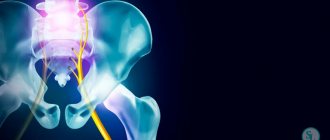Rett syndrome, what is it? Causes and treatment
Rett syndrome is a progressive degenerative disease of the central nervous system, named after the scientist who first described this pathology.
The syndrome is diagnosed during the first 2 years of a child’s life, and it usually occurs in children with normal pregnancy, childbirth and full development in the first months of life (sometimes up to 1.5 years). Then development stops and regression of all forms of mental activity occurs, which is accompanied by the emergence of autism, motor stereotypy, and progressive motor decline. Subsequently, this disease leads to disability and even death.
The main manifestations of the disease are the reverse development of already acquired motor and speech skills between the ages of 1.5 and 3-4 years, repeated stereotypical and uncontrolled hand movements, and mental retardation.
What it is?
Rett syndrome is a psychoneurological hereditary disease, occurs almost exclusively in girls with a frequency of 1:10,000 - 1:15,000, and is the cause of severe mental retardation in girls.
The disease was first described by the Austrian neurologist Andreas Rett in 1966. The child’s development proceeds normally until 6–18 months, but then the girl’s acquired speech, motor, and subject-role skills begin to disappear.
This condition is characterized by stereotypical, monotonous movements of the hands, rubbing and wringing of the hands, which are not of a purposeful nature. Speech becomes difficult, responses become monotonous or echolalic, and at times speech completely disappears (mutism).
Prognosis and life expectancy
The prognosis is not favorable, since the syndrome is guaranteed to lead to severe mental retardation and other disorders. Patients with the syndrome can live up to 40-50 years, provided that maintenance therapy is provided.
The cause of a short life span is often sudden cardiac death. In addition, about a third of patients have defects of internal organs, which also becomes an unfavorable factor. There is a high risk of respiratory or multiple organ failure, stroke, intestinal necrosis, and cerebral edema.
Causes
In the 90s, there was a hypothesis that Rett syndrome is a specific disorder that is associated with gene mutations localized on the X chromosome; caused by a dominant trait and in boys cannot be combined with life. Subsequently, the transmission of the mutant gene by the father's X chromosome was confirmed by the fact that this hereditary pathology can very rarely occur in boys, since they receive the Y chromosome from their father. That is why, with the family type of inheritance of Rett syndrome, boys in such families are born practically healthy.
Currently, there is evidence of the hereditary nature of the disease. The genetic cause of Rett syndrome is associated with an altered X chromosome and mutations that occur in genes that regulate the replication process. In this case, there is a deficiency of certain proteins that regulate this growth, and their cholinergic function is also impaired.
Rett syndrome has been hypothesized to be a developmental disorder characterized by a deficiency of neurotrophic factors. Thus, the basal ganglia, lower motor neurons are affected, and the spinal cord and hypothalamus are involved. Analyzing morphological changes, scientists came to the conclusion that there is a slowdown in brain development from birth, which completely stops growing by the age of four. And also in such children there is a slowdown in the growth of the body and some somatic organs.
Statistics
Rett syndrome is essentially a genetic pathology that is believed to be hereditary. To more accurately investigate the causes, a territorial analysis of the distribution of the syndrome was carried out, which revealed a special frequency of cases of Rett pathology in children from one small locality. Such “foci” were noted in Hungary, Norway and Italy.
The statistics of the syndrome are quite high. For every 10-15 thousand children, one female child is born with the described Rett pathology. In the mid-twentieth century, the Austrian scientist, after whom the syndrome is named, analyzed and symptomatically treated more than 30 cases. All patients were girls. In boys, Rett syndrome is incompatible with life and is extremely rare.
Stages of development
Rett syndrome develops over a long period of time, so the disease is usually divided into several stages depending on the deterioration of the patient’s condition:
- Stagnation is a temporary suspension of the disease, in which there is no increase in symptoms. Lasts from 6-18 months or more. The child loses interest in surrounding events, muscle hypotonia, and slower growth of the head and limbs are noticeable.
- Deterioration of condition. The stage lasts from 1 year to 3-4 years. If a child has mastered the skills of speech and movement, they gradually disappear. Stereotyped hand manipulations, disturbances in the pulmonary system (hyperventilation, shortness of breath, sudden cessation of breathing), incoordination of movements, and unmotivated anxiety appear. Already at stage 2, convulsive seizures appear, the treatment of which is not effective.
- Relative stability, this stage can continue until early school age. Mental insufficiency, convulsions, low weight gain, and impaired emotional contact with others are noted. Epileptic seizures are replaced by inhibition of the nervous system.
- The final stage is characterized by a decrease in the frequency of seizures, but cachexia, scoliosis, and severe respiratory problems appear. Inability to move is possible; short stature of the limbs and small head circumference are determined.
The characteristic symptoms inherent in a particular stage are not one hundred percent arbitrary and may vary depending on the transience of the disease and individual clinical cases.
Symptoms of Rett syndrome
Separately, attention should be paid to the main symptoms by which Rett syndrome is determined, since in medical practice there have been cases where, due to an incorrect interpretation of the signs of the disease, a completely different diagnosis was made, which ultimately led to a rapid death.
Rett syndrome is defined by the following criteria:
- Pronounced microcephaly. In the period after birth, the child has a normal ratio of the size of the head to the body. Gradually, head growth slows down, which is caused by a decrease in brain size.
- Developing scoliosis. Spinal disorders are typical for all children suffering from this disease. The cause of back curvature is muscle dystonia.
- Mental development. Rett syndrome is characterized by profound mental retardation and a lack of rich cognitive activity, which is usually present in all young children. Many patients initially acquire the skills of speaking and perceiving the world around them, but over time they completely lose them. The child has a noticeable absence of any expressive or impressive communication with the environment. To determine disorders in mental development, specialists use standardized psychological tests.
- Specific hand movements. Children lose the ability to hold any objects, be it a toy or a bottle of milk. In this case, monotonous hand movements occur, reminiscent of washing under a tap, and are also characterized by squeezing, fingering, clapping at chest level, face and behind the back. The patient may also suck or bite his hands, or randomly hit himself with them on different parts of the body.
- Convulsive seizures. In almost 80% of cases, girls suffer from epileptic seizures, which are also accompanied by partial seizures, drop attacks, and tonic-clonic type of seizure. Rett syndrome is characterized by the following signs of the formation of a pre-seizure state: tremors, difficulty breathing, sudden movements, gaze directed at one point with complete numbness of the body. These symptoms are often treated with anticonvulsants, but such drugs do not provide any positive effect, since the listed symptoms do not belong to the group of convulsive diseases, but represent only Rett syndrome.
- Neurochemical symptoms. In a study of patients who died with severe Rett syndrome, scientists determined that their brain sizes were either 12% or 24% smaller than normal, depending on the patient's age group. In the cerebellum, cerebral cortex and dorsal ganglia, neuronal deficits and gliosis were observed, as well as reduced levels of pigmentation. According to morphological studies, by the age of four, people suffering from Rett syndrome were diagnosed with a complete stop in brain development and slower growth of other organs and parts of the body.
Consequences and complications
Against the background of reduced intelligence, other complications arise in children. Scoliosis appears due to muscle weakness. Subsequently, the resulting curvature of the spine will compress the lungs, which will cause poor ventilation.
A sedentary lifestyle and frequent dehydration provoke constipation, which can lead to intestinal blockage and unbearable pain.
If you have difficulty swallowing saliva and increased intra-abdominal pressure, there is a risk of gastroesophageal reflux (reflux of stomach contents back into the esophagus), which will lead to inflammation of the esophagus and respiratory infections.
There is a high risk of losing the ability to walk.
Diagnostics
A consultation with a psychiatrist begins with a medical history. During a conversation with parents, the specialist finds out:
- whether pregnancy and childbirth proceeded normally;
- how the child developed during the first 6–18 months;
- what is the dynamics of head growth;
- when the child began to lose acquired skills;
- whether the patient has stereotypical hand movements, seizures, speech, breathing, gait and coordination disorders, delayed psychomotor development.
For an accurate diagnosis, the doctor often prescribes additional examinations:
- EEG (electroencephalogram), which measures the bioelectrical activity of the brain (a slow background rhythm is evidence of a mutation in the X chromosome);
- CT scan of the brain, which can detect changes indicating cessation of brain development;
- Ultrasound of internal organs, giving an idea of the degree of their development.
Without testing data, Rett syndrome may be confused with autism. Both of these conditions are characterized by:
- decreased learning ability;
- loss of speech;
- lack of control over the pelvic organs;
- withdrawal from the outside world;
- lack of eye contact;
- reluctance to make emotional and social contact;
- disturbance of body sensitivity;
- causeless screaming and crying.
You can distinguish one disease from another using differential diagnosis, developed in 1988 at the International Conference on Rett Syndrome.
Differential medical diagnostic data:
| Symptom Description | Manifestation in Rett syndrome | Manifestation in early autism |
| Slow growth of hands, feet and head | A characteristic symptom of Rett syndrome | No sign |
| Developmental delay between six months and one year of age | Doesn't appear | Often observed |
| Respiratory disorders | Often observed | Do not appear |
| Stereotypical hand movements | Repeated monotonous hand movements in the waist area | Varied and complex movements not limited to the belt area |
| Epileptic seizures | Often repeated | Rarely appear |
| Coordination of movements | Progressive loss of coordination leading to complete immobility | Movement and gait are almost normal, but seem mannered |
Using differential diagnostics, not only doctors, but also parents themselves can distinguish autism from Rett syndrome.
Pathogenesis
Science knows of 800 different small mutations that lead to the syndrome. If the gene (MECP2) located on the arm of the X chromosome is defective, this leads to disease.
The MECP2 gene, where the mutation occurs, is responsible for encoding methyl-CpG-binding protein 2 (MeCP2). Most of this protein is found in neurons (nerve cells). However, at the initial stages of embryo formation, this protein is small; as it grows, it increases, which means the risk increases. If the gene is not damaged, then at a certain stage its protein turns off some other genes, and the development of brain structures occurs normally. With mutation, no shutdown occurs, and the brain develops incorrectly.
The newborn looks normal, the usual correct formation is underway, but closer to 6-18 months of age, partial or complete regression of mental development and acquired skills begins. An abnormal gait is observed, along with respiratory disorders, convulsions, and speech problems.
The brain size of patients with the syndrome is small, there is atrophy of the cortex and cerebellum, but there is no destruction of neurons. This is not a typical neurodegenerative disease. Neurons are smaller than they should be, they are more densely packed, and dendritic branching (the projections from neuron cell bodies) is simplified.
Treatment
At this stage of medical development, Rett syndrome is an incurable disease. However, with the help of medications, rehabilitation techniques and a special diet, it is possible to improve the child’s condition, prevent serious body deformations and improve the patient’s quality of life.
To improve your general condition and alleviate symptoms, your doctor may prescribe the following medications:
- antiparkinsonian drugs (Bromocriptine, Perlodel);
- nootropics to improve brain function (Cortexin, Cerebrolysin, Ceraxon);
- medications to regulate the biological regime of day and night (Melatonin);
- drugs to calm the nervous system and correct behavior (Noofen, Phenibut, Glycine);
- antiepileptic drugs to reduce the number of seizures (Carbamazepine, Lamotrigine);
- means to support the functioning of internal organs: heart, liver, stomach, intestines, pancreas.
With severe epilepsy, taking anticonvulsants may not be effective. Often children with Rett syndrome “outgrow” the seizures themselves: by the age of 10, seizures become rare and sometimes go away altogether.
Rehabilitation
The rehabilitation program may include:
- Consultations with a psychologist and speech therapist - once a week.
- Music therapy increases a child’s communicative activity.
- Massage and physical therapy are aimed at strengthening muscles and increasing their tone.
The method invented by the French otolaryngologist Alfred Tomatis has good reviews. The goal is to re-teach the child the process of listening, which improves the ability to learn and master languages, increases creativity and has a positive effect on the baby's social behavior.
- Art therapy and dolphin therapy have a positive effect on the psycho-emotional state of the child.
- Hippotherapy (therapeutic horse riding) and hydrotherapy (showers, dousing, rubbing) have a biomechanical effect on the child’s body and strengthens muscles.
- ABA therapy improves the social adaptation of patients. Some complex actions (contact, creative play, speech) are broken down into small parts for the child. In the future they will be combined into one large block.
It is worth noting that visiting an osteopath has a good therapeutic effect. Improvement is observed after just a few sessions.
Nutritional Features
Feeding a sick child presents certain difficulties. Many girls experience increased salivation and poor oral health, so feeding them is a real problem. Some children have a good appetite and enjoy eating their favorite foods. But they all eat very slowly; the process of eating can last up to an hour and a half. As for drinking, almost half of sick babies have difficulties with swallowing, which are manifested by choking, coughing and can threaten liquid getting into the respiratory tract.
- Children with Rett syndrome have difficulty chewing food containing coarse fiber (meat, raw vegetables, fruits), so it must be crushed and given as a puree. It is better to offer side dishes in small pieces or mashed. During feeding, you need to make sure that the baby's head is at the correct angle and does not fall back.
- In some cases, when the process of absorbing food becomes too problematic and painful, it makes sense to feed the child through a tube with special nutritional mixtures. This option can significantly improve the baby’s quality of life and can become a real salvation for him.
Many children suffer from nausea and often refuse to eat, so it can be very difficult to feed them; such babies quickly lose weight. Therefore, food should be enriched with proteins and fats, sufficiently high in calories and fortified. It is recommended to feed the child in small portions and often (every 3 hours) so as not to overload the digestive system. Young children are given fortified milk or formula.
Forecast
To find adequate treatment, doctors and scientists around the world are conducting intensive research into a childhood disorder called Rett syndrome. Data and results from research centers dealing with this problem already confirm the version that the processes triggered by pathology are reversible.
Active development of a strategy for the use of stem cells is underway, on which the treatment of Rett syndrome will be based. Already today, preliminary means have been tested on laboratory mice. Professor Belichenko's experiments, which were carried out at the University of California, give a positive prognosis and hope for the early scientific discovery of an effective treatment for Rett syndrome.
Prevention
Physical therapy is one of the optimal ways to correct movement disorders. It includes exercises aimed at maintaining flexibility and range of motion of the limbs, as well as maintaining walking skills for as long as possible.
Psychological programs are proposed for the maximum development of remaining intact motor skills and the formation of a “language of communication” on their basis. Music therapy is also used, as it has a beneficial calming effect on children and partially compensates for impaired contact with the outside world. Research into Rett syndrome is intensive throughout the world, and it is probably only a matter of time before a specific biological marker is discovered.
When this happens, there will be new prospects for treating pathology or alleviating the condition of patients, as well as the possibility of prenatal screening and prevention of this serious disease.
Traditional therapy
Doctors often recommend a diet rich in vitamins, fiber and high-calorie foods. This is done to ensure that the child with CP gains weight. This requires frequent feeding, every three hours. Such nutrition can slightly stabilize the condition of patients with Rett syndrome.
The therapeutic treatment program necessarily includes massage and gymnastics. Physical activity sessions develop the child’s limbs, increase body flexibility and stimulate muscle tone.
Children with Rett's disease have been shown to benefit from music. It calms the sick and stimulates interest in the world.
There are special programs and treatment in rehabilitation centers where children with Rett syndrome are adapted to the world around them.








